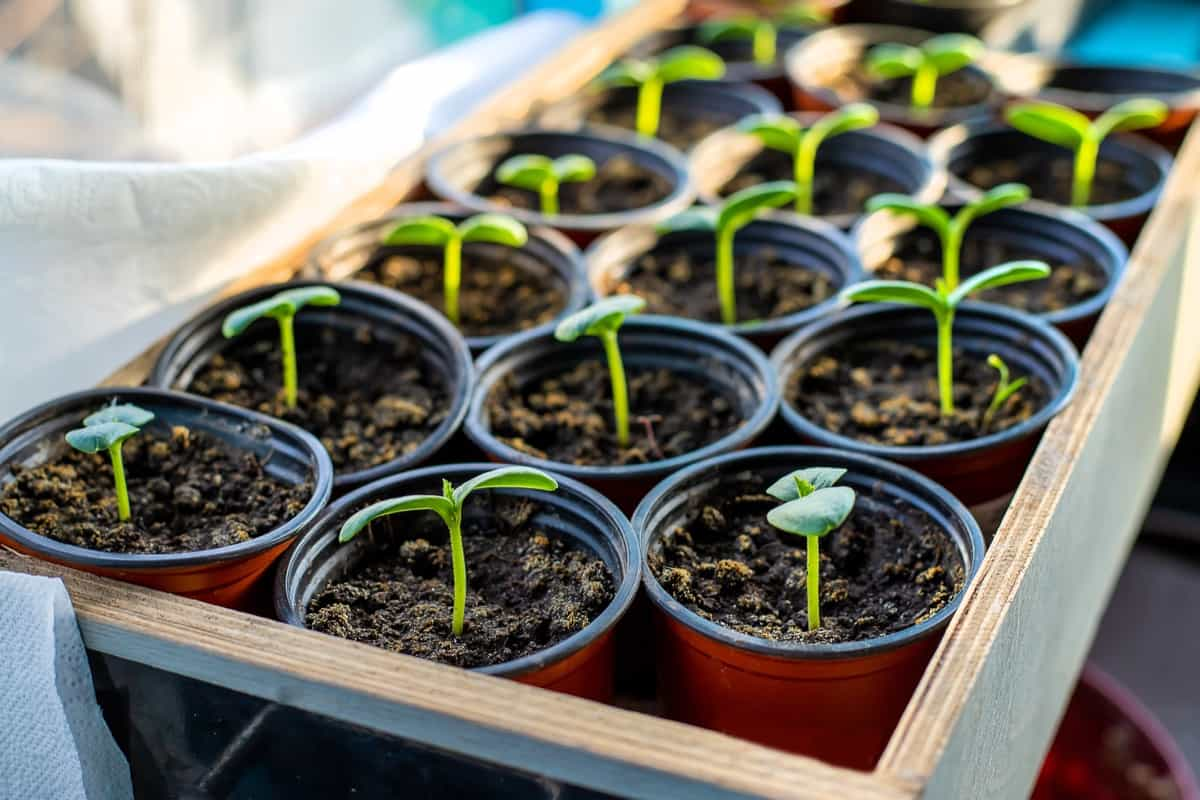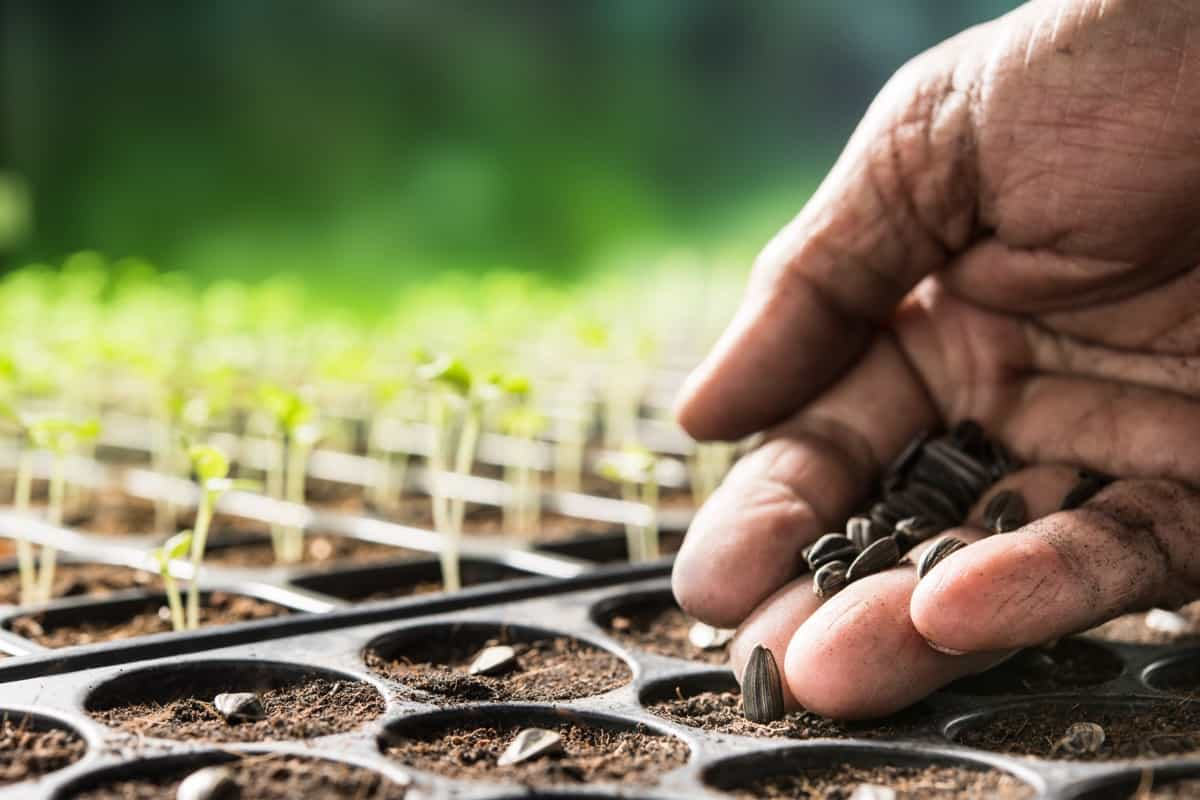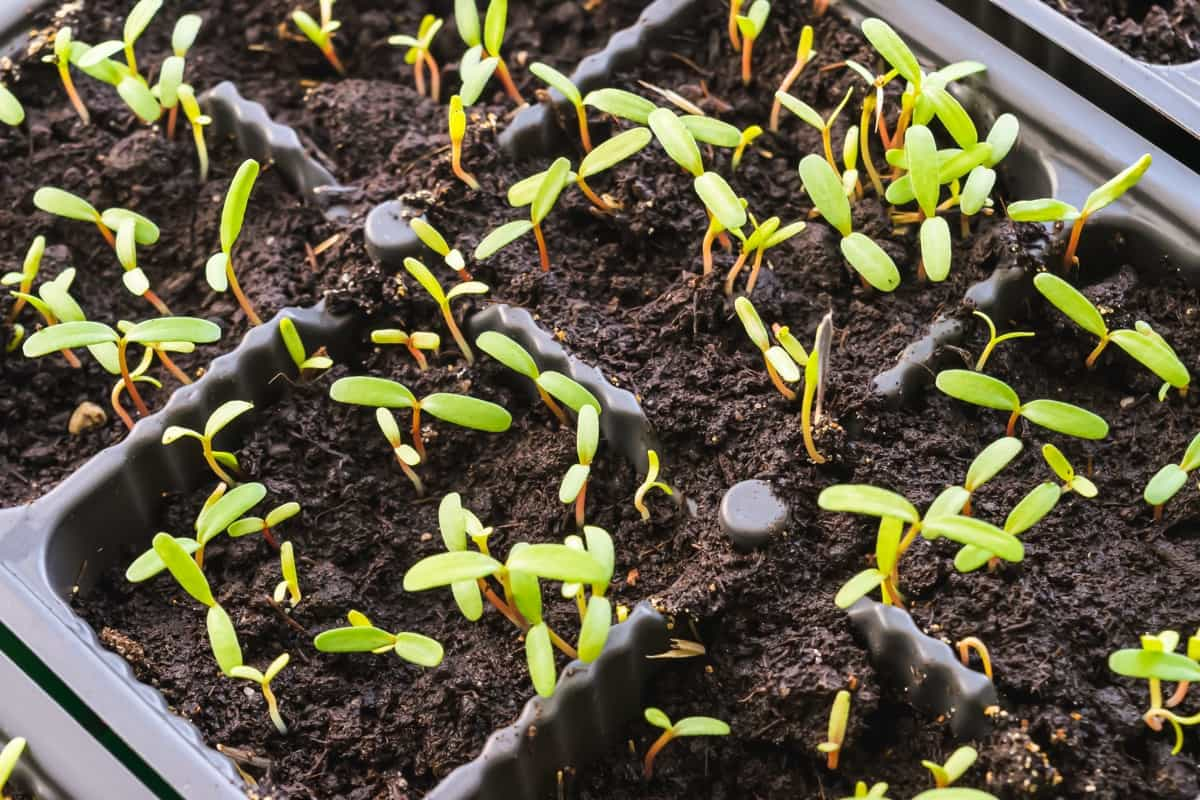Identifying the root cause of seed starting problems requires patience, observation, and a bit of trial and error. Don’t get discouraged if things don’t go perfectly from the start – every mistake is an opportunity to learn and improve. With the tips and techniques, you’ll be better equipped to tackle any challenges that come your way.

Remember to stay proactive in preventing future issues by maintaining good hygiene practices, providing optimal growing conditions, and staying vigilant for signs of trouble. By mastering the art of troubleshooting seed starting problems, you’ll not only increase your chances of success but also deepen your understanding of plant growth and cultivation.
Seed Starting Problems
Planting Too Deep
When it comes to starting seeds, one common issue that many gardeners face is planting them too deep. Planting your seeds at the incorrect depth can hinder their ability to germinate and grow properly. Seeds have specific requirements for how deeply they should be planted, so it’s essential to follow the guidelines on the seed packet or instructions.
If you bury them too far beneath the soil surface, they may not receive enough oxygen or light to sprout. To avoid this problem, make sure to read the planting instructions carefully and follow them precisely. Using your finger can help ensure you’re planting at the correct depth.
Overwatering
Over-watering seedlings is a common issue that many new gardeners face when starting seeds. It may seem like you’re nurturing your plants by giving them lots of water, but too much can harm them. One way to avoid overwatering is to ensure that your containers have good drainage holes to allow excess water to escape. Another tip is to let the top layer of soil dry before watering again. This helps prevent waterlogging and promotes healthier root growth. Monitoring the moisture level of your soil regularly can also help you avoid overwatering.
Incorrect Temperatures
Incorrect temperatures can be a common issue when it comes to seed starting. It’s crucial to provide the right environment for your seeds to germinate and thrive. Seeds have specific Temperature control for germination, so make sure to check the recommended range on your seed packets.
If it’s too cold, seeds may struggle to sprout; if it’s too hot, they could become stressed or even die. A simple fix is using a heat mat or adjusting the location of your seed trays to ensure they are at the right temperature. Keeping a close eye on the thermometer can help you maintain a stable environment for successful germination.
Inadequate Light
Plants need sufficient light to thrive, especially during their early stages of growth. When they don’t get enough light, they can become leggy or pale. If you notice that your seedlings are reaching toward the closest light source or seem stretched out, it’s a sign that they’re not getting adequate light. This is because plants naturally want to maximize their exposure to sunlight for photosynthesis.
In case you missed it: Expert Guide on How to Transplant Cucumber Seedlings for Maximum Harvest

When it comes to Light requirements for seed starting, consider placing your seedlings in a brighter location with more direct sunlight or invest in grow lights if natural light is lacking. When it comes to leggy seedlings solution, provide the right amount of light, you’ll help them develop strong and healthy stems and leaves, setting them up for success as they continue to grow into robust plants.
Damping Off
Seedling damping off is a common seed starting problem that can be frustrating for beginners. It’s when your seedlings collapse at the soil line, seemingly overnight. This is caused by a fungal disease that thrives in moist conditions. To prevent pests/diseases in starting seeds, make sure to use sterile potting mix and containers.
Avoid overwatering your seedlings; let the top layer of soil dry out between waterings. Adjust watering practices and ensure proper ventilation to create an unfavorable for fungal growth. By taking proactive measures and keeping a close eye on your seedlings, you can minimize the risk of damping off and increase the success of your seed starting endeavors.
Improper Seed Stratification
Seed stratification is a crucial step in the germination process for certain plant seeds. It involves simulating natural conditions that Seed dormancy breaking, allowing them to sprout. Improper stratification can result in low or failed germination rates. Some seeds require cold, moist conditions to break dormancy, while others need warm temperatures.
Failure to provide the correct stratification conditions can lead to Poor seedling growth. To properly stratify seeds, you may need to refrigerate them for a specific period or soak them in water. Researching the specific requirements of each type of seed is essential for successful germination.
Dry Soil/not Enough Moisture
One common Seed starting soil problem that many gardeners face is dry soil or insufficient moisture. When Underwatering seedlings, they struggle to germinate and establish healthy roots. To Troubleshoot slow seed germination, it’s essential to keep a close eye on your seedlings’ moisture levels. Make sure the soil stays moist but not waterlogged. Using a spray bottle or mister can help you control the amount of water you’re adding.
Consider covering your plant trays with a clear plastic dome or using a humidity dome to maintain moisture levels in the soil and create a greenhouse effect for better growth conditions. If you notice your soil drying out quickly, try placing your containers on a tray filled with water so they can absorb moisture from below through capillary action. Remember, different seeds require different levels of hydration, so be mindful of their individual needs as well.
Planting Too Early
Planting your seeds too early can lead to a host of problems. Wait until the recommended planting time according to the specific requirements of each plant species. Rushing the process may result in disappointment later on. Seedlings that are exposed to chilly temperatures can become stressed and susceptible to diseases. It’s best to be patient and let nature take its course. Even if you’re eager to get started, remember that patience is key when it comes to successful seed starting. Trust the timing and follow guidelines for optimal results.
Soil Imbalance
Ensuring the right balance of nutrients in your DIY seed starting mix recipes is crucial for the healthy growth of your plants. Soil imbalance can lead to stunted growth, yellowing leaves, or even plant death. Excess nitrogen in the soil causes excessive leafy growth but hinders fruit production.
In case you missed it: How to Grow Nectarine from Seed: A Comprehensive Guide for Beginners

On the other hand, reusing seed starting mix may result in poor root development. Calcium deficiency might manifest as blossom end rot in tomatoes, while magnesium deficiency can cause yellowing between leaf veins. Testing your soil before planting seeds is essential to determine its nutrient levels and adjust accordingly with organic fertilizers or compost.
Seed Viability
Over time, the viability of seeds can decrease, leading to poor Seed germination rates. To ensure successful seed starting, it’s crucial to use fresh, viable seeds. Factors such as improper Seed storage best practices or age can affect the viability of seeds. Always check the expiration date on seed packets, or store saved seeds in a cool, dry place for maximum longevity.
Performing a simple germination test before planting can help determine if your seeds are still viable. If you find that your older seeds have low viability, consider purchasing fresh ones from reputable sources for better results in your gardening endeavors.
In case you missed it: Apricot Tree Propagation with Seedling, Grafting, and Tissue Culture Methods

Conclusion
Troubleshooting seed germination issues can be a challenging yet rewarding experience for any gardener. Remember, planting too deep, overwatering, incorrect temperatures, inadequate light, damping off, improper seed stratification, old seeds, dry soil or lack of moisture, planting too early, soil imbalance, seed viability, hardening off seedlings can impact the success of your seed starting efforts. By being aware of these potential problems and taking proactive steps to address them, you can give your seeds the best possible chance of thriving.
- Flower Garden Designs and Layouts for Beginners
- Planting and Spacing Techniques in Papaya: A Beginner’s Guide
- Growing Gold: Essential Techniques for Planting Pineapples
- How to Make Kalanchoe Plant Bushy: Home Remedies and Solutions
- 11 Reasons Why Your Gardenia is Not Blooming: Home Remedies and Solutions
- Eco Elegance: The Guide to Designing a Drought-Tolerant Landscape
- Gardening on a Slope: Strategies for Hillside Landscaping
- Nourish and Flourish: Top Organic Mulches for Thriving House Plants
- Everything You Want to Know about Indian Mogra Flower: Discover Uses and Growing